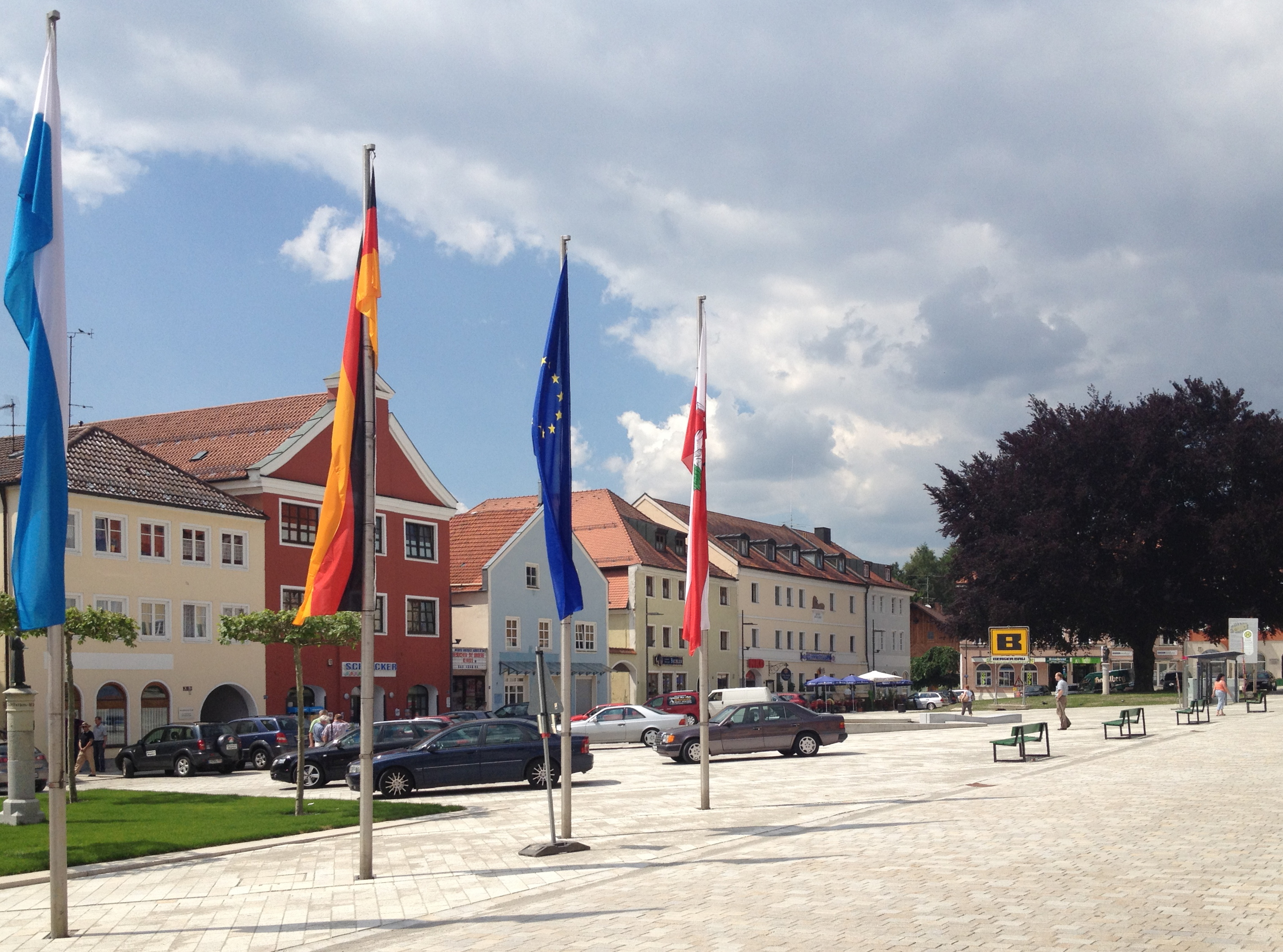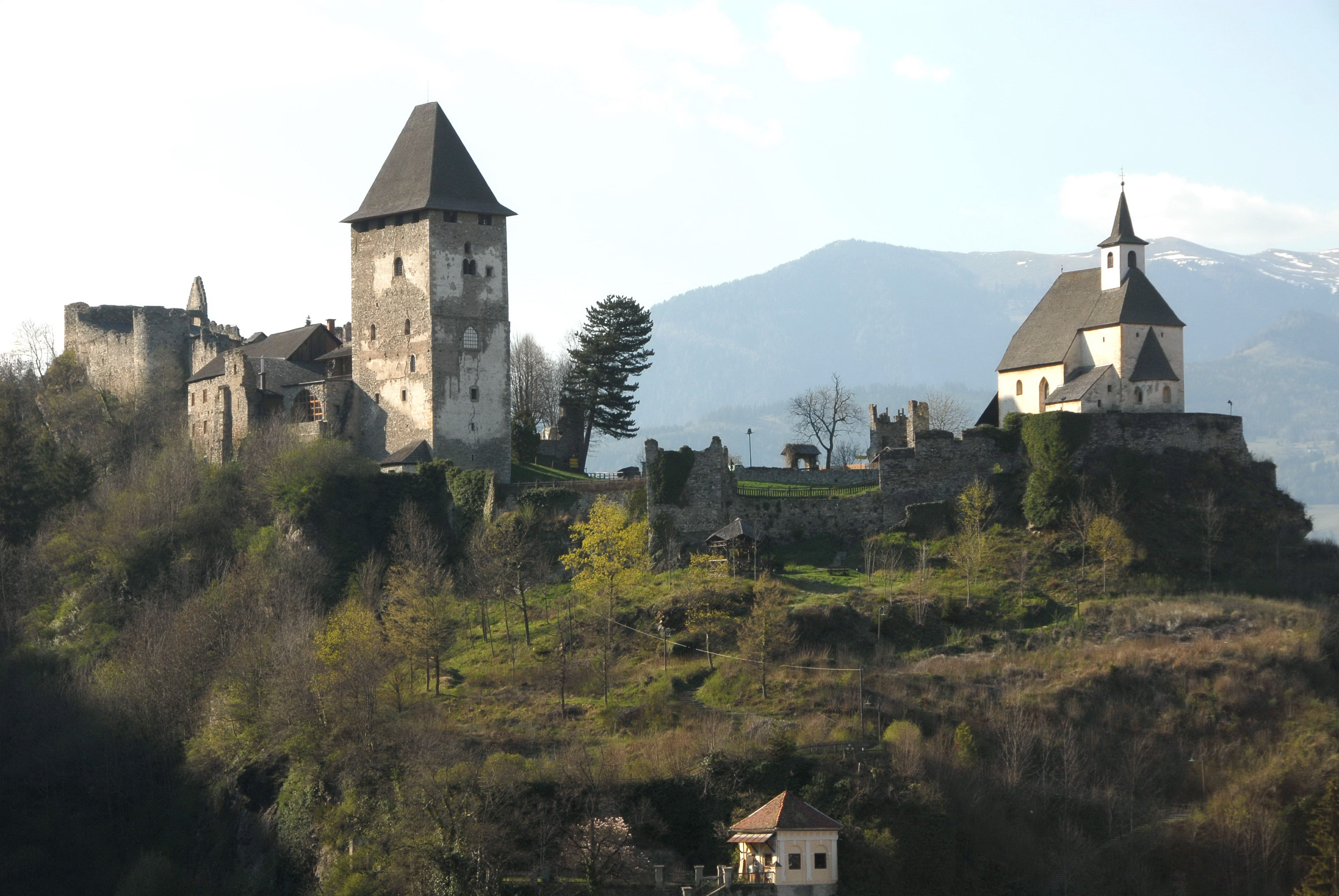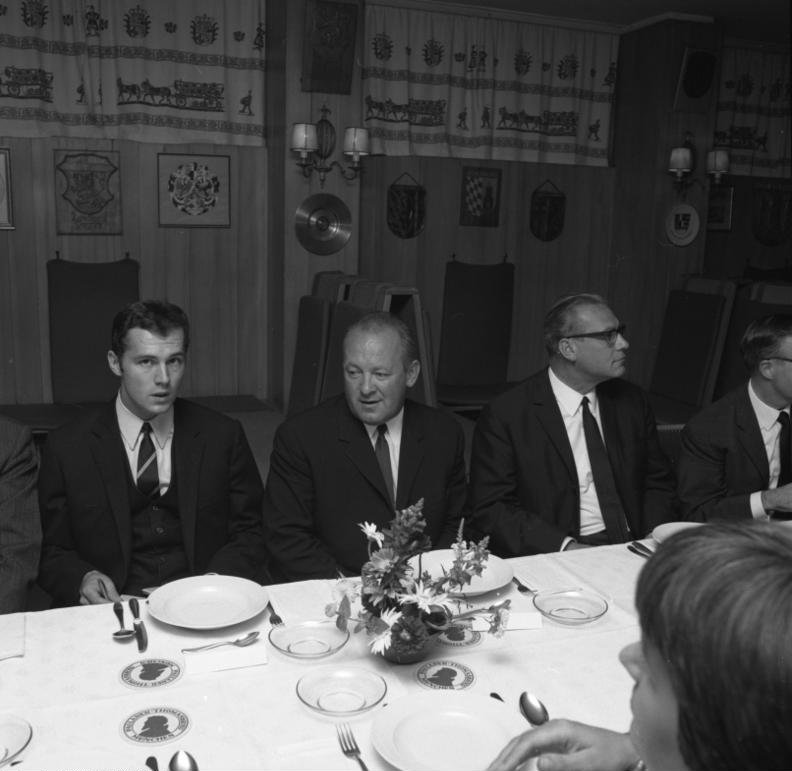|
Bad Griesbach Im Rottal
Bad Griesbach im Rottal ( bar, label=Central Bavarian, Bad Griasboch im Rottoi), or just Bad Griesbach, is a town in the district of Passau in Bavaria in Germany. History "Burg Griesbach" is first mentioned in a document from around 1076. The place was part of Landshut. It was raided and destroyed by an army from the Electorate of the Palatinate in 1504, only to be re-erected soon afterwards. In 1778/79 Griesbach was occupied by Austrian forces. As part of the Dukedom Bavaria, (official name) became more independent. In 1953 it was officially turned into a town (Kleinstadt). The Bavarian reform of 1972 merged the municipalities of Karpfham, Parzham, Reutern, St. Salvator and Weng. The discovery of hot springs in 1972/73 lead to a new orientation as a spa town. Mayors The mayor is Jürgen Fundke, he was elected in 2008 with 58% of the votes and re-elected in 2014 and 2020. He is the successor of Robert Erdl ( CSU). The predecessors were Konrad Ebner (CSU) and Edmund Mitzam. ... [...More Info...] [...Related Items...] OR: [Wikipedia] [Google] [Baidu] |
Ortsteil
A village is a clustered human settlement or Residential community, community, larger than a hamlet (place), hamlet but smaller than a town (although the word is often used to describe both hamlets and smaller towns), with a population typically ranging from a few hundred to a few thousand. Though villages are often located in rural areas, the term urban village is also applied to certain urban neighborhoods. Villages are normally permanent, with fixed dwellings; however, transient villages can occur. Further, the dwellings of a village are fairly close to one another, not scattered broadly over the landscape, as a dispersed settlement. In the past, villages were a usual form of community for societies that practice subsistence agriculture, and also for some non-agricultural societies. In Great Britain, a hamlet earned the right to be called a village when it built a Church (building), church. [...More Info...] [...Related Items...] OR: [Wikipedia] [Google] [Baidu] |
Patron Saint
A patron saint, patroness saint, patron hallow or heavenly protector is a saint who in Catholicism, Anglicanism, or Eastern Orthodoxy is regarded as the heavenly advocate of a nation, place, craft, activity, class, clan, family, or person. In Christianity Saints often become the patrons of places where they were born or had been active. However, there were cases in Medieval Europe where a city which grew to prominence and obtained for its cathedral the remains or some relics of a famous saint who had lived and was buried elsewhere, thus making them the city's patron saint – such a practice conferred considerable prestige on the city concerned. In Latin America and the Philippines, Spanish and Portuguese explorers often named a location for the saint on whose feast or commemoration day they first visited the place, with that saint naturally becoming the area's patron. Occupations sometimes have a patron saint who had been connected somewhat with it, although some of ... [...More Info...] [...Related Items...] OR: [Wikipedia] [Google] [Baidu] |
Friesach
Friesach ( sl, Breže) is a historic town in the Sankt Veit an der Glan district of Carinthia, Austria. First mentioned in an 860 deed, it is known as the oldest town in Carinthia. Geography Location Friesach covers an area of 120.83 km2 and its mean elevation is 631 meters above sea level. It is located in northern Carinthia near the border with Styria, about north of its capital Klagenfurt. Municipal arrangement Friesach is divided into the following ''Katastralgemeinden'': Friesach, St. Salvator and Zeltschach. It can be further divided into Friesach proper and the villages and hamlets of Dobritsch, Dörfl, Engelsdorf, Gaisberg, Grafendorf, Guldendorf, Gundersdorf, Gunzenberg, Gwerz, Harold, Hartmannsdorf, Hundsdorf, Ingolsthal, Judendorf, Kräuping, Leimersberg, Mayerhofen, Moserwinkl, Oberdorf I, Oberdorf II, Olsa, Pabenberg, Reisenberg, Roßbach, Sattelbogen, Schratzbach, Schwall, Silbermann, St. Johann, St. Salvator, St. Stefan, Staudachhof, Stegsdorf, Timrian ... [...More Info...] [...Related Items...] OR: [Wikipedia] [Google] [Baidu] |
Flag Of Austria
The flag of Austria ( de-AT, Flagge Österreichs) is the flag of the nation of Austria. It consists of three bands of colour in the following order: red, white, and red. The Austrian flag is considered one of the oldest national symbols still in use by a modern country, with its first recorded use in 1230. The Austrian triband originated from the arms of the Babenberg dynasty. As opposed to other flags, such as the black-and-yellow banner of the Habsburgs, the red-white-red flag was from very early on associated, not with a reigning family or monarch, but with the country itself. In addition to serving as the flag of Austria since 1230, it was adopted as the naval ensigns and flags of the Grand Duchy of Tuscany and Duchy of Modena and Reggio in the 18th and 19th centuries respectively, as both were ruled by cadet branches of the House of Habsburg. History Origins The flag traces back to the coat of arms of the medieval Babenberg dynasty, a silver band on a red field ... [...More Info...] [...Related Items...] OR: [Wikipedia] [Google] [Baidu] |
Town Twinning
A sister city or a twin town relationship is a form of legal or social agreement between two geographically and politically distinct localities for the purpose of promoting cultural and commercial ties. While there are early examples of international links between municipalities akin to what are known as sister cities or twin towns today dating back to the 9th century, the modern concept was first established and adopted worldwide during World War II. Origins of the modern concept The modern concept of town twinning has its roots in the Second World War. More specifically, it was inspired by the bombing of Coventry on 14 November 1940, known as the Coventry Blitz. First conceived by the then Mayor of Coventry, Alfred Robert Grindlay, culminating in his renowned telegram to the people of Stalingrad (now Volgograd) in 1942, the idea emerged as a way of establishing solidarity links between cities in allied countries that went through similar devastating events. The comradeship ... [...More Info...] [...Related Items...] OR: [Wikipedia] [Google] [Baidu] |
Franz Beckenbauer
Franz Anton Beckenbauer (, ; born 11 September 1945) is a German former professional footballer and manager. In his playing career he was nicknamed ''Der Kaiser'' ("The Emperor") because of his elegant style, dominance and leadership on the field, and also as his first name "Franz" is reminiscent of the Austrian emperors. He is widely regarded to be one of the greatest players in the history of the sport. A versatile player who started out as a midfielder, Beckenbauer made his name as a central defender. He is often credited as having invented the role of the modern sweeper (''libero''). With success at club and international level, he is one of nine players to have won the FIFA World Cup, the UEFA Champions League and the Ballon d'Or. Twice named European Footballer of the Year, Beckenbauer appeared 103 times for West Germany and played in three FIFA World Cups and two European Championships. He is one of three men, along with Brazil's Mário Zagallo and France's Didier Desc ... [...More Info...] [...Related Items...] OR: [Wikipedia] [Google] [Baidu] |
Ministry Of Justice
A Ministry of Justice is a common type of government department that serves as a justice ministry. Lists of current ministries of justice Named "Ministry" * Ministry of Justice (Abkhazia) * Ministry of Justice (Afghanistan) * Ministry of Justice (Albania) * Ministry of Justice and Solicitor General of Alberta * Ministry of Justice (Algeria) * Ministry of Justice (Andorra) * Ministry of Justice (Angola) * Ministry of Justice and Legal Affairs (Antigua and Barbuda) * Ministry of Justice and Human Rights (Argentina) * Ministry of Justice (Armenia) * Ministry of Justice, Security and Integration (Aruba) * Ministry of Justice (Austria) * Ministry of Justice (Azerbaijan) * Ministry of Justice (Bahrain) * Ministry of Law, Justice and Parliamentary Affairs (Bangladesh) * Ministry of Justice of the Republic of Belarus * Ministry of Justice (Benin) * Ministry of Justice and Institutional Transparency (Bolivia) * Ministry of Justice (Bosnia and Herzegovina) * Ministry of Justice and Publ ... [...More Info...] [...Related Items...] OR: [Wikipedia] [Google] [Baidu] |
Josef Altstötter
Josef Altstötter (4 January 1892Verdict, Judge's trial, pages 1170 to 1177. Bad Griesbach (Rottal), Lower Bavaria – 13 November 1979, Nuremberg) was a high-ranking official in the German Ministry of Justice under the Nazi Regime. Following World War II, he was tried by the Nuremberg Military Tribunal as a defendant in the Judges' Trial, where he was acquitted of the most serious charges, but was found guilty of a lesser charge of membership in a criminal organization (the SS). Professional career After serving in World War I, Altstötter completed his law studies in Munich in 1920, passed the state jurisprudence examination and began work in 1921 as deputy judge in the Bavarian Justice Department. In 1927 he worked in the Reich Ministry of Justice. In 1933, he moved to the Supreme court, Supreme Court for Leipzig and finally in 1936 into Reich Labour Court. From 1939 to 1942 he was with the Wehrmacht. From January 1943 he was back in the Reich Ministry of Justice (Division V ... [...More Info...] [...Related Items...] OR: [Wikipedia] [Google] [Baidu] |
Conrad Of Parzham
Conrad of Parzham, Order of Friars Minor Capuchin, O.F.M. Cap. (22 December 181821 April 1894), was a German people, German Franciscan lay brother. He served for over 40 years in the post of porter (monastery), porter of the Capuchin friary in Altötting, through which work he gained a widespread reputation for his wisdom and holiness. He has been declared a saint by the Catholic Church. Life Early life Born 22 December 1818, he was baptized with the name of John, the son of Bartholomäus Birndorfer and Gertrude Niedermayer, and was born on the family farm in Parzham, now a part of the town of Bad Griesbach (Rottal), Bad Griesbach, then in the Kingdom of Bavaria, now part of Germany. Baptized Johann Evangelist, he was the second youngest of 12 children, five of whom died in infancy.Cargnoni, O.F.M.Cap., Costanzo. ''The Capuchin Way: Lives of Capuchins'', v. 1, pt. 2, North American Capuchin Conference, 1996, pp. 180-206 At the age of six, he started elementary school in nearby ... [...More Info...] [...Related Items...] OR: [Wikipedia] [Google] [Baidu] |
Bayerisches Landesamt Für Statistik
The statistical offices of the German states (German language, German: ''Statistische Landesämter'') carry out the task of collecting official statistics in Germany together and in cooperation with the Federal Statistical Office of Germany, Federal Statistical Office. The implementation of statistics according to Article 83 of the Basic Law for the Federal Republic of Germany, constitution is executed at state level. The Bundestag, federal government has, under Article 73 (1) 11. of the constitution, the exclusive legislation for the "statistics for federal purposes." There are 14 statistical offices for the States of Germany, 16 states: See also * Federal Statistical Office of Germany References {{Reflist National statistical services, Germany Lists of organisations based in Germany, Statistical offices Official statistics, Germany ... [...More Info...] [...Related Items...] OR: [Wikipedia] [Google] [Baidu] |
Christian Social Union In Bavaria
The Christian Social Union in Bavaria (German: , CSU) is a Christian-democratic and conservative political party in Germany. Having a regionalist identity, the CSU operates only in Bavaria while its larger counterpart, the Christian Democratic Union (CDU), operates in the other fifteen states of Germany. It differs from the CDU by being somewhat more conservative in social matters, following Catholic social teaching. The CSU is considered the ''de facto'' successor of the Weimar-era Catholic Bavarian People's Party. At the federal level, the CSU forms a common faction in the Bundestag with the CDU which is frequently referred to as the Union Faction (''die Unionsfraktion'') or simply CDU/CSU. The CSU has 45 seats in the Bundestag since the 2021 federal election, making it currently the second smallest of the seven parties represented. The CSU is a member of the European People's Party and the International Democrat Union. Party leader Markus Söder serves as Minister-Pre ... [...More Info...] [...Related Items...] OR: [Wikipedia] [Google] [Baidu] |





.jpg)
